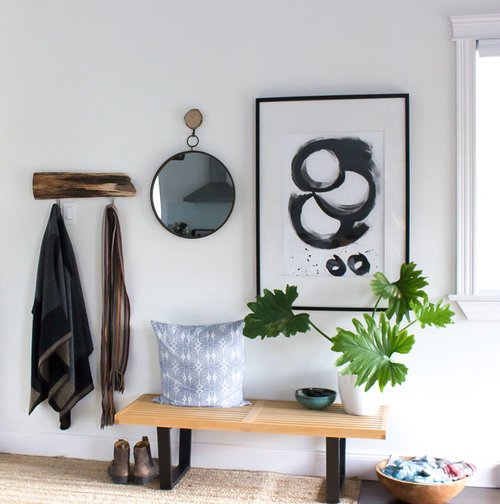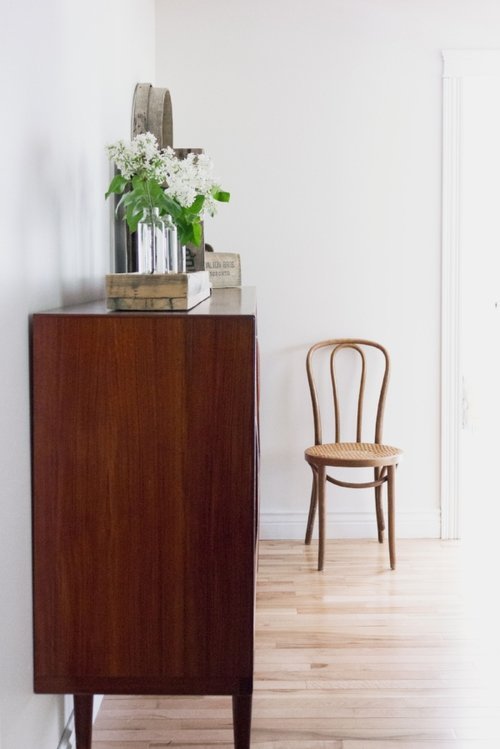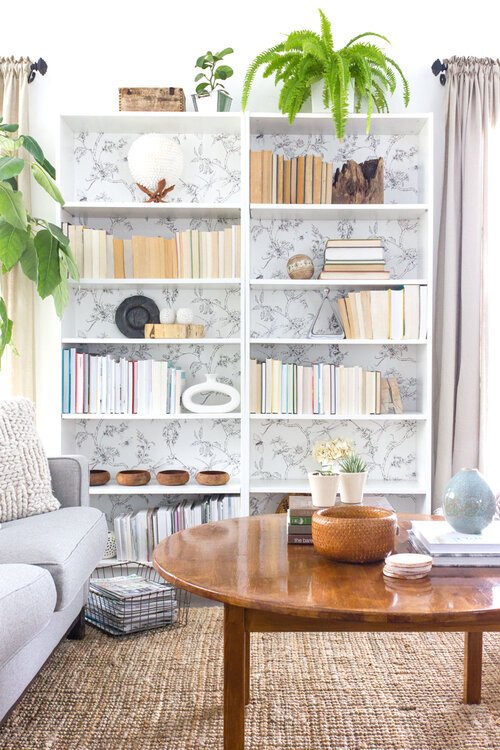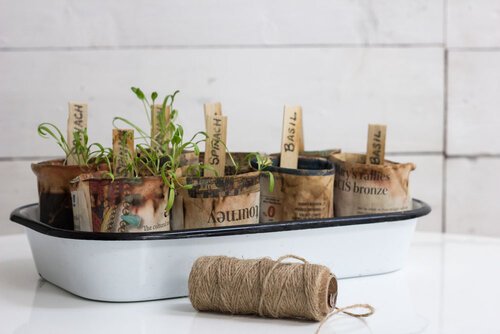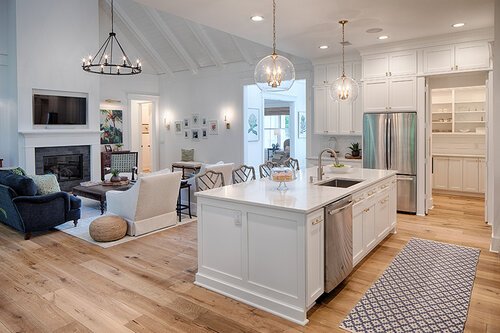Case Study: Lessons Learned From A Serious Wardrobe Declutter
I have this friend. She’s awesome and inspires me constantly with her positivity, energy, warmth, and intelligence. She’s a yoga teacher, savvy business owner and wonderful mother.
But here’s the thing. She’s a near-hoarder when it comes to clothes and accessories. I mean she has a seriously out-of-control closet that spilled out into her whole bedroom. I’m talking clothes and shoes and bags purchased over 20+ years, some of which have never been worn or thrown out or even picked up off the floor. You wouldn’t know it to see her – she always looks very put-together and in-control. But her private closet and bedroom space is a different story.
We were talking one day and she confessed to me that she felt so overwhelmed and anxious when she began each day. She realized that her wardrobe and her cluttered space was blocking her from being her best. But she was paralyzed to begin to remedy this. Even the thought of decluttering brought her to a panicked state. She agreed to allow me to help, and so we worked together on three different days to break a big task into manageable chunks that she could digest emotionally. And the results were incredible.
70 dresses donated/sold
75 tops donated/sold
60 pants/bottoms donated/sold
1 garbage bag full of workout clothing donated
1 garbage bag full of old intimates & unrepairable clothing tossed
20 pairs of shoes donated/sold
11 purses/bags donated/sold
Half of the walk-in closet plus one full dresser emptied so that her partner could now have a place for his wardrobe
Time getting ready in the morning cut in half
Money saved with the new 1in:1out rule
My friend tells me she feels an incredible lightness now that she has never felt about her wardrobe or her closet. The time it takes her to put together an outfit in the morning is minuscule, and it’s so simple for her now that the positivity she feels in the mornings actually carries through to everything she does during the day. She also feels great because she knows that what she’s wearing looks fantastic on her, since anything that didn’t flatter her was eliminated. And she’s excited at her outfit possibilities because she actually has things to wear that she forgot she had, and can find the accessories that are perfect!
She also feels much less tied down emotionally and financially to her “stuff” and therefore experiences less stress and anxiety in her home. In fact, now that the clutter has been eliminated, her bedroom has become a sanctuary that allows her to relax and decompress from other inevitable stresses in life. The panic she originally felt when we started taking away her things has been replaced with relief at not having to carry such a heavy load, but instead having space to breathe. She’s told me that she’s going to cull down even more items as she can now see that she doesn’t wear some of the things we kept!
Here’s how we successfully managed the massive closet declutter:
1. We started by getting into the mindset of only keeping things that bring her true joy and that she will wear often.
Decluttering can be an emotionally tough process. In fact, my friend was very anxious about me coming over to begin our work. Although she logically wanted to make more space in her closet and life, she was terrified of getting rid of anything she had spent hard-earned money on, or that had memories attached to it. What if I need that dress for a special occasion? I got those shoes at half-price – they were such a good find! But I bought that shirt on a trip and it reminds me of that special time!
We talked through what she was feeling and how she would feel once these things were not in her home. Clothing that she had kept for 20 years did not represent her past or her success. They were just ‘things’ that were not really meaningful in her present life. She still had great memories of those trips that were triggered from other things like photos or seeing travel mates or a journal. And we turned her thinking about her financial investment in her wardrobe on its head: instead of being proud of being able to purchase these pieces and finding good deals, having too many items in her closet now represents money not saved for experiences instead of ‘things’.
2. We asked these four questions about each and every piece of her wardrobe that we examined:
- Do I truly love it and does it bring me joy?
- Does it make me feel and look good?
- Do I wear it regularly?
- Is it a duplicate of something I already own?
3. We broke down the task into categories.
As Marie Kondo wisely suggests in The Life-Changing Magic of Tidying Up, we tackled decluttering her closet not by focusing on the closet itself but by the category of items. So we didn’t expect to just go through everything in her closet at once, because we would have gotten bogged down by which shoes go with that dress, or by that memory box stuffed in the corner. Instead, we broke everything down into dresses, tops, pants, suits, workout clothing, shoes, bags, intimates, and accessories.
In each category, we pulled out every item from everywhere in the house, including from the laundry and hamper, along with seasonal clothing packed away. We piled everything onto the bed and then went through piece by piece, usually trying each piece on to make sure it still fit and she still felt good in it.
4. We made piles and kept a ‘maybe’ pile to come back to later.
Because my friend was still hesitant to get rid of some things, we created a ‘maybe’ pile along with our keep, donate and toss piles. At first, quite a few things went into the ‘maybe’ pile. I pushed her to really be diligent with our four questions. Did that black dress really look better on her than the very similar one we already put in the keep pile? And the more we got into the process, the better she felt about ridding herself of the pieces of clothing she really would never wear or that she had duplicates of. When we returned at the end of each category to the ‘maybe’ pile, she was able to release most of the items in it.
5. We made a place for everything and put everything back in its place.
With the clothing that we kept, we carved out a section of her closet or drawers for them and organized them by colour. The dresses were all together on hangers sorted by colour, as were the pants and tops. Sweaters were folded and stacked by long sleeve/short sleeve/lightweight/heavyweight/etc. Intimates were organized with dividers in drawers, also divided by colour and use (ie. everyday/fancy/workout).
We made sure that there was one hanger for everything and no more. That way she would know if something was in the wash when she was looking for it, and there would not be a lot of empty hangers taking up space.
We created hooks for jewelry and belts, designated and labeled separate bins for laundry and items to be mended, and put seasonal clothing away in bins under the bed.
6. We made things look nice.
I’ve learned that keeping things organized and decluttered is easier when you have a beautiful space to encourage it. Jewelry and scarves became a hanging display of art. A cute little rug was laid down on the floor in the walk-in closet. A pretty mirror was hung on the door to prevent clothing from being flung over it. A beautiful basket became the dirty clothes hamper. The dim light bulb was switched out for a vintage chandelier that provides much more light. A few motivational sayings were printed and hung in the closet and room. The dresser tops have fun little bowls and trays for catching watches or earrings and odds and ends. We even hung a valet rack (just a simple hook) on the wall outside of the closet so she can create an outfit to hang for the next day or a special occasion and it also doubles as décor.
7. We established guidelines for maintaining an organized and manageable wardrobe.
Making space in her closet and decluttering and organizing her wardrobe was one thing; keeping it that was is another. One of the most effective ways to maintain an organized space is to respect it. My friend is now learning to respect her clothing by not discarding pieces on the floor or keeping them crumpled and un-ironed in a bin. She now puts everything back in its place: if it’s dirty, it goes in the hamper; if not, she hangs it back up since she can now easily find the hanger on which it belongs. Respecting our stuff and our spaces makes them look better and makes us feel better.
She has also vowed to stick to some guidelines that will help her maintain the volume of clothing she owns. The major one is the 1in:1out rule. She does not have any extra hangers in her closet or space in her drawers, and so if she purchases a new item, one must come out. She now stops and considers this before purchasing anything at the store, and then determines if it’s worth it. She also runs through the four questions before purchasing anything new, making her decision much easier and eliminating impulse buys.
LESSONS LEARNED
-The question of whether you truly love a piece of clothing and does it bring you joy truly is life-changing because it gives you permission to let go. To let go of shoes bought simply because they were on sale, of jeans past their prime, and of tops that don’t quite flatter as they should.
-Purging feels GREAT. Letting go of physical things that don’t add to your life frees up not only tangible space in your room but also mental space for more meaningful things.
-Organizing a space to make it both functional and beautiful renews the soul. It feels like you’ve been on a spa week and have returned 10 lbs lighter, glowing and full of renewed energy. It helps you sleep better and wake up with a smile.
-Decluttering is good karma. While some things went to a consignment shop and brought a financial return, most were donated and will bring joy to others who need it more.
-Decision-making is so much easier. When you get into the habit of always asking “Will this bring me joy?” you don’t need to hum and haw over whether to purchase something or keep something. It cuts way down on time and mental anguish.
-Respecting your things and your space means respecting yourself. If you live in a neat and streamlined space, and your clothing is kept in good shape, you’re making the decision that you are worthy of respect as well, and you’ll carry yourself accordingly.



